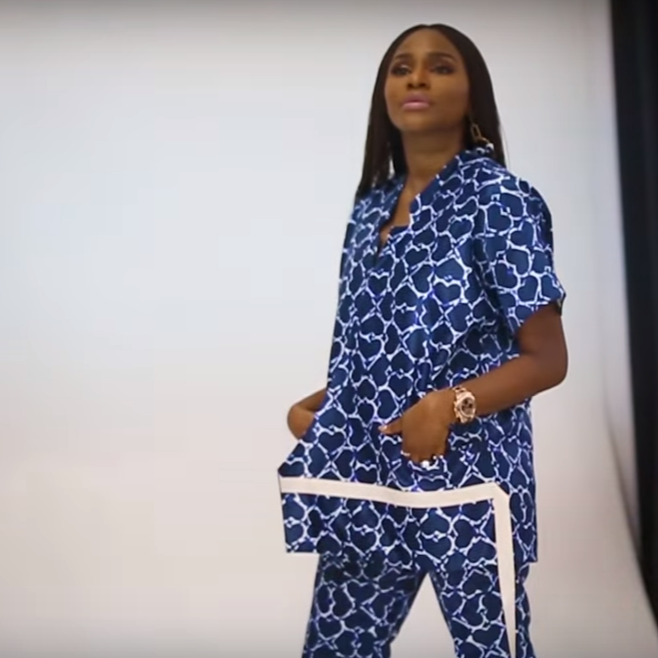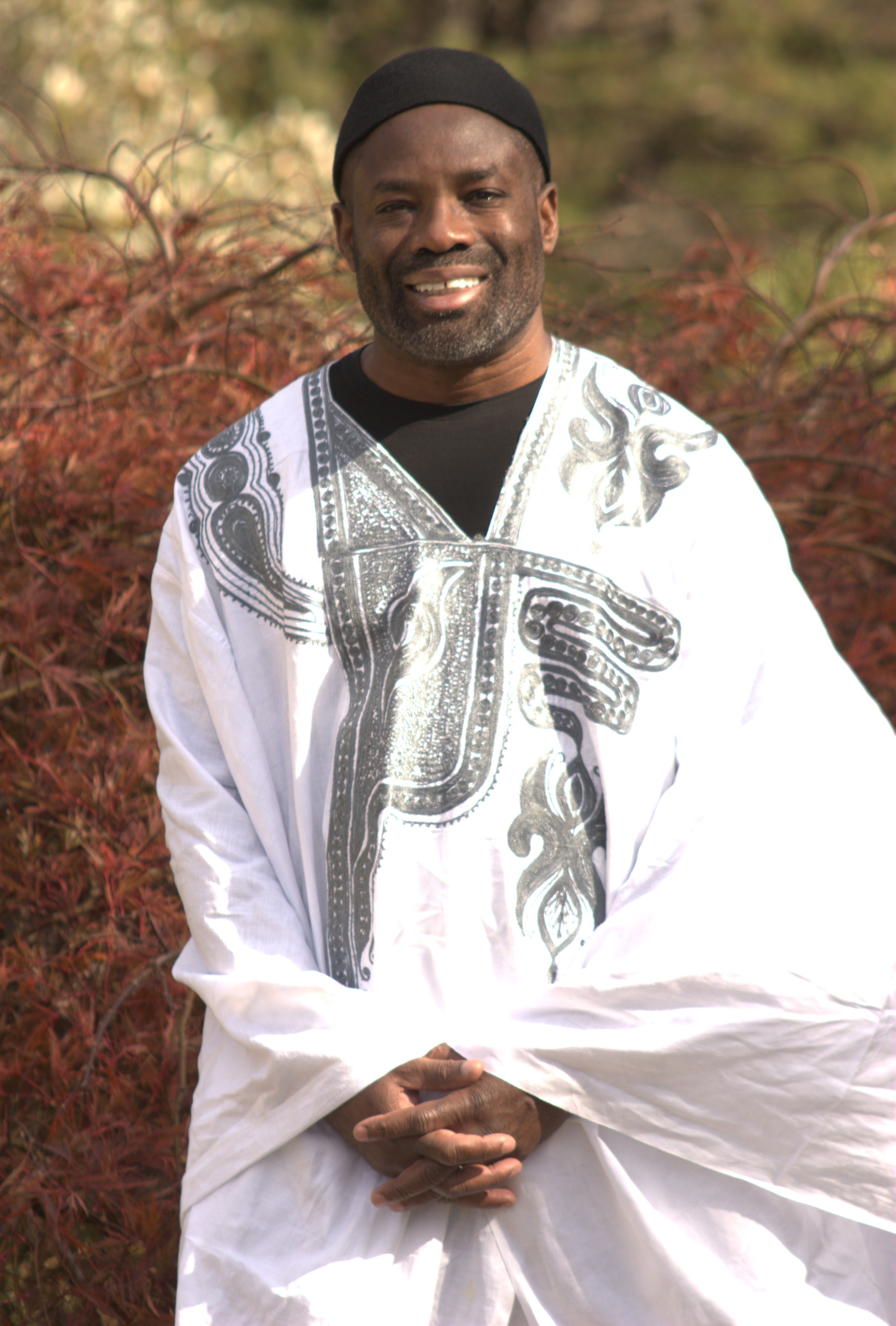Fashion in Nigeria on:
[Wikipedia]
[Google]
[Amazon]
 The fashion industry in
The fashion industry in

 Nigerians usually dress casually because of the hot climate. However, both formal and traditional clothing is also worn. Many African cultures have a characteristic traditional style of dress that is important to their heritage. Traditional garments worn in Nigeria include:
The
Nigerians usually dress casually because of the hot climate. However, both formal and traditional clothing is also worn. Many African cultures have a characteristic traditional style of dress that is important to their heritage. Traditional garments worn in Nigeria include:
The
 Nigeria has produced many fashion designers.
Shade Thomas (later Thomas-Fahm) became Nigeria's first widely recognized fashion designer. After studying fashion design in England in the 1950s, prior to Nigerian independence, she set up a shop at the
Nigeria has produced many fashion designers.
Shade Thomas (later Thomas-Fahm) became Nigeria's first widely recognized fashion designer. After studying fashion design in England in the 1950s, prior to Nigerian independence, she set up a shop at the
Fashion Designers Association of Nigeria
(archived on 8 August 2022) Nigerian fashion Nigerian clothing
 The fashion industry in
The fashion industry in Nigeria
Nigeria ( ), , ig, Naìjíríyà, yo, Nàìjíríà, pcm, Naijá , ff, Naajeeriya, kcg, Naijeriya officially the Federal Republic of Nigeria, is a country in West Africa. It is situated between the Sahel to the north and the Gulf o ...
plays an important cultural role and contributes significantly to the country's economy. Casual attire is commonly worn but formal and traditional styles are also worn depending on the occasion. Clothing incorporates a variety of colors, fabrics, and embellishments (often beads). Many of the component cultures of Nigeria wear styles that are characteristic of their tribal society and customs. Nigeria produces fashionable textiles and finished garments and has designers who have achieved international recognition.
Traditional garments

 Nigerians usually dress casually because of the hot climate. However, both formal and traditional clothing is also worn. Many African cultures have a characteristic traditional style of dress that is important to their heritage. Traditional garments worn in Nigeria include:
The
Nigerians usually dress casually because of the hot climate. However, both formal and traditional clothing is also worn. Many African cultures have a characteristic traditional style of dress that is important to their heritage. Traditional garments worn in Nigeria include:
The agbada
The boubou or grand boubou is a flowing wide-sleeved robe worn across West Africa, and to a lesser extent in North Africa, related to the dashiki suit.
The garments and its variations are known by various names in different ethnic groups and l ...
is a loose, wide-sleeved robe worn by North
North is one of the four compass points or cardinal directions. It is the opposite of south and is perpendicular to east and west. ''North'' is a noun, adjective, or adverb indicating Direction (geometry), direction or geography.
Etymology
T ...
and Western African men. First adopted by the Hausa, it also has many other names. The agbada is formal attire, commonly worn as part of a three-piece set: an open-stitched full gown, a long-sleeved shirt, and sokoto (trousers fitted snugly at the ankle).
The isiagu
{{Unreferenced, date=July 2008
The Isiagu, also called Chieftaincy, is a pullover shirt similar to the dashiki that is worn by Igbo people. It is usually worn on special occasions like weddings. The shirt may be long or short sleeved. Some shi ...
is a men's pullover shirt similar to a dashiki
The dashiki is a colorful garment that covers the top half of the body, worn mostly in West Africa. It is also known as a Kitenge in East Africa and is a common item of clothing in Tanzania and Kenya. It has formal and informal versions and var ...
that is worn by many groups in Africa. The traditional attire of Igbo men includes an isiagu patterned with embroidered lion heads, usually worn with trousers and a traditional striped hat.
Traditional Yoruba
The Yoruba people (, , ) are a West African ethnic group that mainly inhabit parts of Nigeria, Benin, and Togo. The areas of these countries primarily inhabited by Yoruba are often collectively referred to as Yorubaland. The Yoruba constitute ...
dress uses fine beads and textiles to reflect social status and religious affiliation as well as personal identity and taste.
The Edo
Edo ( ja, , , "bay-entrance" or "estuary"), also romanized as Jedo, Yedo or Yeddo, is the former name of Tokyo.
Edo, formerly a ''jōkamachi'' (castle town) centered on Edo Castle located in Musashi Province, became the ''de facto'' capital of ...
also traditionally express their status and identity with beads, but also with raffia
Raffia palms (''Raphia'') are a genus of about twenty species of palms native to tropical regions of Africa, and especially Madagascar, with one species (''R. taedigera'') also occurring in Central and South America. ''R. taedigera'' is the sour ...
work, anklets, and bangles. Edo men traditionally wear coral beads of two kinds, ekan and ivie, with either suits or traditional robes; traditionally, they wear a white shirt contrasting with brightly striped fabric.
The gele is a traditional woman's head wrapping made of firm material. It may be worn as a fashionable accessory on formal occasions but can also be daily wear. Edo women wear a wedding crown called an okuku.
Muslim women in northern Nigeria wear various types of veil
A veil is an article of clothing or hanging cloth that is intended to cover some part of the head or face, or an object of some significance. Veiling has a long history in European, Asian, and African societies. The practice has been prominent ...
, including the gele and the hijab
In modern usage, hijab ( ar, حجاب, translit=ḥijāb, ) generally refers to headcoverings worn by Muslim women. Many Muslims believe it is obligatory for every female Muslim who has reached the age of puberty to wear a head covering. While ...
, which reveal the face but cover the hair and may cover much of the body. Veiling may take fashionable forms.
Nigerian fashion
Euromonitor
Euromonitor International Ltd is a London-based market research company founded in 1972.
History
The firm was founded by Robert Senior in 1972. Trevor Fenwick joined in 1978.
Euromonitor International's main product is Passport, a subscription ...
estimated in 2015 that Nigeria accounted for 15% of a $31 billion fashion market in Sub-Saharan Africa
Sub-Saharan Africa is, geographically, the area and regions of the continent of Africa that lies south of the Sahara. These include West Africa, East Africa, Central Africa, and Southern Africa. Geopolitically, in addition to the List of sov ...
. The Nigerian fashion industry grew 17% between 2010 and 2019, with events such as Lagos Fashion Week
Lagos Fashion Week (LagosFW) is an annual multi-day clothing trade show that takes place in Lagos, Nigeria. It was founded in 2011 by Omoyemi Akerele and it is Africa’s largest fashion event drawing considerable media attention, nationally a ...
helping to promote it.
Nigerian fashion has been popularized by the Nigerian edition of the South African magazine ''Drum
The drum is a member of the percussion group of musical instruments. In the Hornbostel-Sachs classification system, it is a membranophone. Drums consist of at least one membrane, called a drumhead or drum skin, that is stretched over a she ...
'', which was launched in Lagos in 1958 and featured images of the "new" Nigerians. In the late 20th century, several editions of the ''Dressense Fashion Catalogue'' were produced by fashion designers in Nigeria, aimed at the upscale market. The Fashion Designers Association of Nigeria was established in 1989 by Kola Kuddus to promote Nigerian fashion both domestically and internationally.
Designers
 Nigeria has produced many fashion designers.
Shade Thomas (later Thomas-Fahm) became Nigeria's first widely recognized fashion designer. After studying fashion design in England in the 1950s, prior to Nigerian independence, she set up a shop at the
Nigeria has produced many fashion designers.
Shade Thomas (later Thomas-Fahm) became Nigeria's first widely recognized fashion designer. After studying fashion design in England in the 1950s, prior to Nigerian independence, she set up a shop at the Federal Palace Hotel
The Federal Palace Hotel is a 5 star hotel with 150-rooms that overlooks the Atlantic Ocean, located in the commercial hub of Victoria Island (Nigeria), Victoria Island in Lagos. Established in 1960 as the country's premier international hotel, ...
in Lagos
Lagos (Nigerian English: ; ) is the largest city in Nigeria and the List of cities in Africa by population, second most populous city in Africa, with a population of 15.4 million as of 2015 within the city proper. Lagos was the national ca ...
and a garment factory at the Yaba Industrial Estate. Specializing in simple designs using locally woven and dyed textiles, she became locally and internationally known in the 1960s and 1970s.
Fadipe Adedamola Olaniyi is CEO of Hoodies and Stones Clothing, which promotes African culture through its products.
Duro Olowu is a Nigerian women's wear designer with Jamaica
Jamaica (; ) is an island country situated in the Caribbean Sea. Spanning in area, it is the third-largest island of the Greater Antilles and the Caribbean (after Cuba and Hispaniola). Jamaica lies about south of Cuba, and west of His ...
n roots who launched his own label in the 2000s.
Lisa Folawiyo uses traditional West African fabrics to produce modern tailored designs. She launched her label, Jewel by Lisa, in 2005e. She also produces custom luxury prints and accessories such as jewelry and purses. Line J Label, her diffusion line, showcases urban fashion
Hip hop fashion (also known as rap fashion) is a style of dress originating from Urban Black America and inner-city youth located in New York City, followed by Los Angeles, then other cities across the United States. All have contributed various ...
with Afropop
African popular music (also styled Afropop, Afro-pop or Afro pop), like African traditional music, is vast and varied. Most contemporary genres of African popular music build on cross-pollination with western popular music. Many genres of po ...
influences.
Philip Ojire launched his urban fashion label Freak Vault Clothing, formerly Shirt Freak, in 2017.
Omotoso Oluwabukunmi runs tWIF Clothing; the name is an acronym of The Way It Fits. Launched in 2012, the company produces branded apparel for businesses and other organizations, as well as own-brand menswear including shirts, pants, suits, and native attire.
Kenneth Ize, a menswear designer, won the Fashion Focus prize and was one of the first Nigerian designers to have his clothes sold at Browns in London.
See also
* Adire (textile art)References
{{reflistExternal links
Fashion Designers Association of Nigeria
(archived on 8 August 2022) Nigerian fashion Nigerian clothing